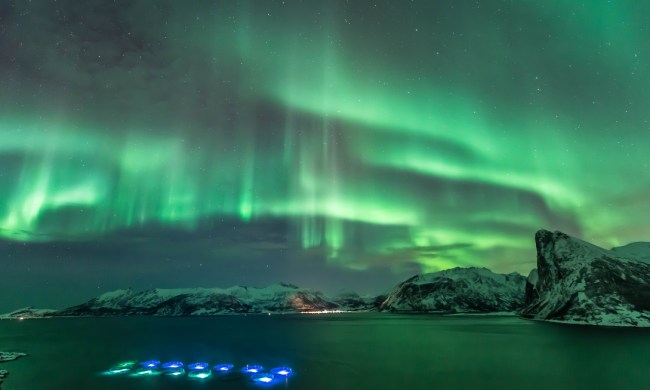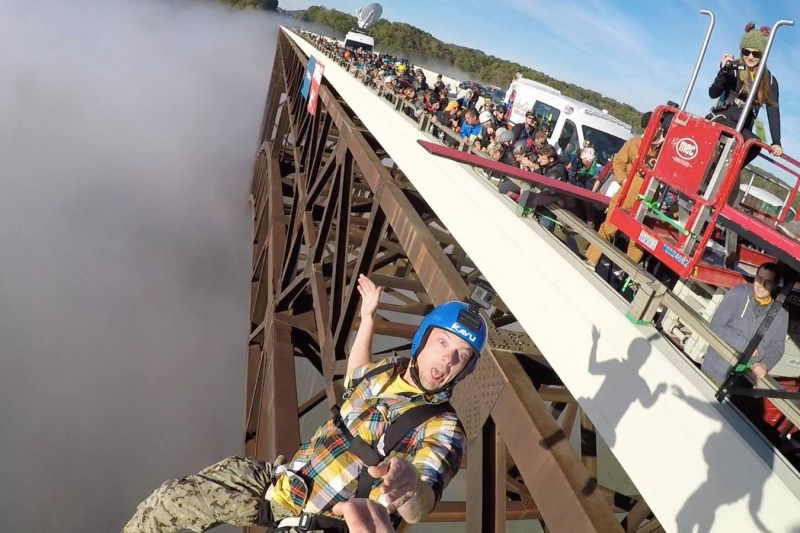
It’s tough to reach Scotty Bob Morgan now in rural, remote Brazil. It’s been two months since he and his wife, Julia, began working a nearby drop zone, “a place where idiots learn how to jump out of airplanes,” he says, laughing. But really, that’s just a side gig, a way to pass the time when not practicing his true passion: Building, antenna, span, and earth jumping, or BASE, and teaching it to others.
Morgan, 34, seems like just another dirtbag outdoorsman at first glance, and the internet is filled with the jumps, dives, and wingsuit flights that have earned him worldwide renown. But the San Diego, Calif., local spent his first five years out of high school in the Marine Corps as a Combat Cameraman, a job akin to Joker in Full Metal Jacket. For the entirety of his enlistment, which included two deployments in Iraq, he documented the exploits of others. Now, with the Corps far behind, the military veteran has entered a second act more daring than the first.
Related Guides
- Best Veteran-Owned Gear Brands
- Meet the Man Who Has Traveled the Greatest Vertical Distance on Earth
“Scotty Bob is like a flying fireball with a tender heart,” says Tyler Lee, the marketing director and athlete manager for KAVU, one of Morgan’s longtime sponsors. “You know he is always out there burnin’ and arguably one of the best wingsuiters in the world. When you are lucky enough to get close to him and grab a hug you can truly feel his genuine soul.”
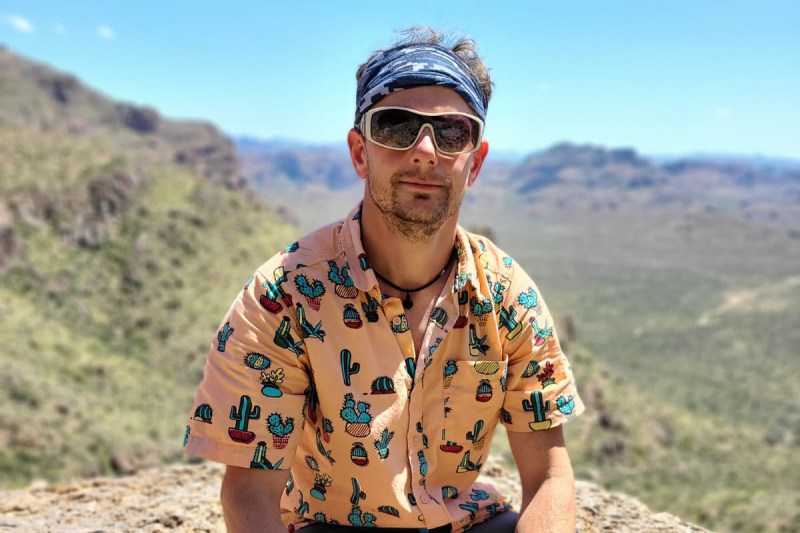
Most of the world’s BASE jumpers start and work out of one of a few hubs in Europe. Gondolas and trams pull you close to drop points, English is readily spoken, and the roads and trains are reliable. Brazil, on the other hand, is almost the opposite: Buying equipment within the country is either expensive or impossible due to trade regulations and taxes, the roads can be poor, Portuguese or dialects are spoken almost exclusively, and if you want to reach the top of a mountain to jump, you’ll need to work out an arrangement with the local coffee farmers to drive you up in their trucks before elbowing through a herd of cattle. It may seem strange, then, that Morgan would end up there, a foreign country in which he doesn’t speak the language, but desperate times call for creative measures: “It’s difficult with the [worldwide] travel restrictions and, on top of that, finding a cliff that’s acceptable,” he says.
Proper BASE jumping and instruction requires an overhanging precipice at least 400 meters high that is easily accessible so that you can jump multiple times in quick succession. “There’s really not that many places out there,” he says, which makes the expansion of the Brazilian location so significant. But it’s also distinct when compared to what the Euro-centric BASE jumping world has grown accustomed to. “It’s not going to be sanitized,” he says. “It’s more raw.”
How raw is raw?
“You have to deal with a few scary animals every once in a while,” he says, shrugging. “If you just don’t wear your glasses, then you don’t see the snakes and spiders and everything else. You just walk right by them.”
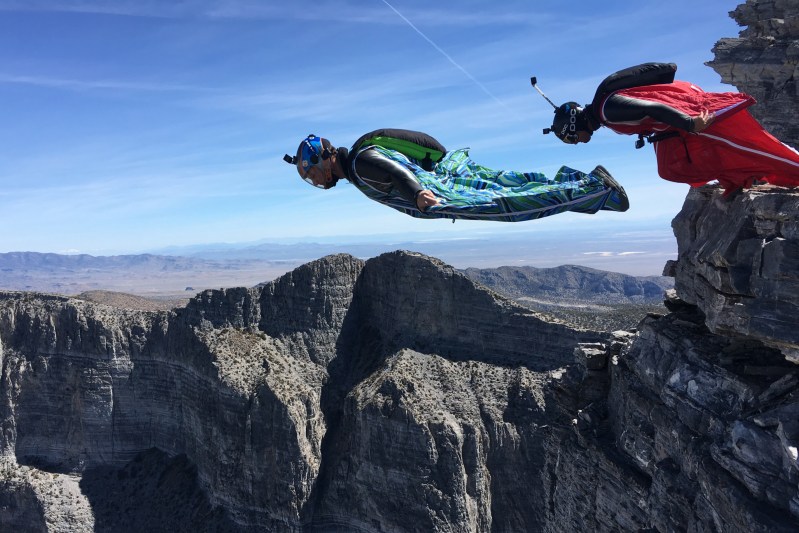
With this curious strategy, it’s not surprising that his students are far from the jet-packing, yoga-retreat crowd. Morgan says they’ve come to this fledging endeavor from all over the world, including many from Brazil herself. It’s the latter group with whom he’s become so enamored. “It’s kind of like the Marine Corps,” he says, “they do 10 times more with 10 times less.” Whether that’s experiencing life, enjoying the task at hand, and especially jumping, he’s developed a newfound passion for the sport and for Brazil’s future contributions to it.
When Morgan talks about Brazil, he gushes about a new generation of Brazilian athletes training far from the watchful eye of the BASE jumping world. And as for the location itself (not yet revealed), he believes it’s a significant addition to the international stage, as its year-round mild climate allows year-round jumps, another key to progression. “The amount of training and learning and potential there is for the sport in general is awesome,” he says. “It’s like we found a new door for what is possible in terminal base jumping.”
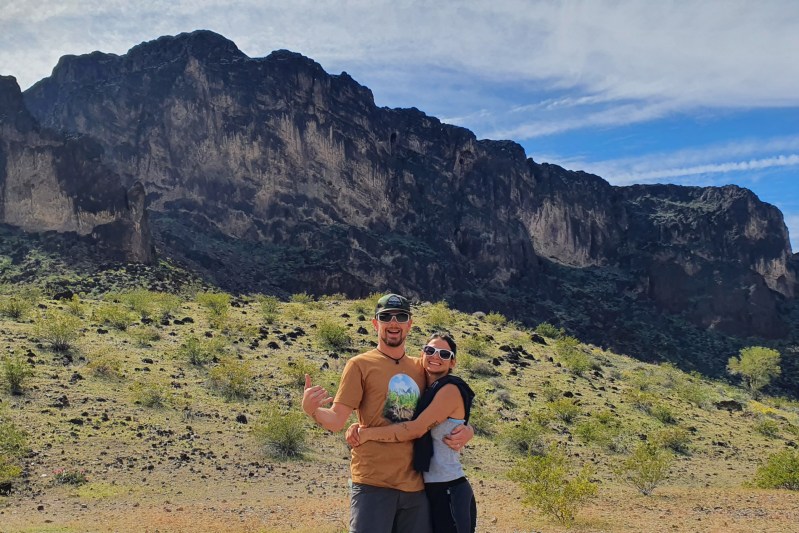
Morgan’s wife, Julia, a Brazilian by birth and half of the couple’s company, Bob’s Base Academy, calls to him from the bar where’s he’s scrounged enough Wi-Fi to make a Skype call to the States. She’s got a drink the size of a volleyball, he says, called “The Wilson,” and it’s time to end our talk so he can celebrate another day in BASE jumping paradise.
So how’s the future look? we ask.
“I’ll be down here for the next 10 years,” he says.
And how’s your Portuguese coming along?
With the confidence of a college sophomore asking where the bathroom is in a Mexican restaurant, he rattles off a practiced phrase that ends in “poco.” While he’s teaching the next generation of Brazilians how to BASE jump, Scotty Bob Morgan still needs a good instructor.


